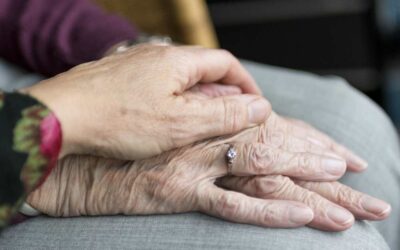November 18, 2020 – Joint Covid-19 Response Legislative Workgroup
Robert Neall, Secretary, Maryland Department of Health
Things Marylanders can do:
- Wear a mask
- Practice physical distancing
- Wash hands
- Answer the call of contact tracers
Maryland Strong: Roadmap to Recovery
- Testing – 3.9 million cumulative PCR tests conducted in Maryland, with testing volumes of approximately 30,000 tests a day.
- Contact Tracing – Over 64,000 cases and over 85,000 contacts reached and interviewed by Maryland’s 1400 contact tracers.
- PPE – Approximately 85 million pieces of PPE distributed, with requests being fulfilled as we speak from the incident command system.
- Hospital Surge Capacity – At the onset of the pandemic, approximately 6,700 surge beds were identified, and we continued to make Advanced Medical Tents, ICU Modulars, and Alternate Care Sites available for Covid patients.
Dr. Jinlene Chan, Acting Deputy Secretary, Public Health Services
Effective Friday, November 20 at 5pm:
- 10pm closure for bars, restaurants: All bars, restaurants, and venues serving food and alcohol must close between 10pm and 6am, except for carryout and delivery.
- 50% capacity for retail and religious facilities: Capacity at retail and religious facilities will be reduced to 50%.
- Limiting capacity at outdoor sporting venues: To the lesser of 50% capacity or 250 people.
MDH Secretary’s Orders: Healthcare Matters – November 17, 2020
- Hospital visitation prohibited until further notice.
- Exceptions: end-of-life care, obstetrics, parents or guardians of minors, and support for people with disabilities.
- Hospital surge management: Allows hospitals that are either full or nearing capacity to transfer patients to hospitals that are equipped or provide them with the care they need.
- Guidance on elective procedures: State health officials issued guidance warning medical providers to avoid elective procedure admissions that may require prolonged post procedure care.
MDH Secretary’s Orders: Nursing Homes – November 17, 2020
- Nursing home testing surge: Institutes mandatory twice-weekly testing for all staff at Maryland nursing homes, as well as mandatory weekly testing for all nursing home residents.
- New limits on visitation: Restrictions for indoor visitation at these facilities that aligned with CMS guidance.
- Visitors need a negative test result 72 hours before visit
- there is no change for conducting outdoor visitation
PPE Update
Contact Tracing: MD Covid Alert
- Launched MD Covid Alert on November 10. This is in addition to our traditional contact tracing efforts.
- Implements Apple/Google Exposure Notification Express technology
- Nearly 1 million smartphones have enabled MD Covid Alert
Contact Tracing
- Continuing to focus on public awareness and participation.
- Within the past month, increasing trend of interviewed cases reporting attending gatherings of more than 10 people or visiting high risk locations.
#MasksOnMaryland Campaign
- MDH, in partnership with our local health departments, has distributed more than 60,000 masks since the summer.
- The Masks on Maryland campaign focuses on the benefits of wearing a mask.
- Masks are a way to carry on doing things we enjoy, not as a barrier to life.
Q&A
Senator Delores Kelley: Regarding where costs will be borne for this new stockpile of PPE. With regard to the transfers to alternate care sites, that we don’t overwhelm smaller assisted livings. Could you tell us what the cost structure for PPE will be? Regarding the transfers are we sure people will be in safe and life affirming places?
Dr. Jinlene Chan: The state and local governments have been purchasing supplies of PPE. Our continued communications have been that they need to stockpile. With the remaining money we have from CARES Act we need to spend that by the end of December. That is where the request was made to local for any remaining CARES Act funds they have to purchase PPE. We provided the local counties with information about burn rates and provided them access to existing state contracts if it would make the process easier for them. We are the supplier of last resort so if they are in dire need they should go to their local health department. Regarding transfers, when I say alternate care sites I’m talking about the surge capacity that we have stood up in multiple locations. We are not looking to transfer individuals to assisted livings.
Delegate Michael Jackson: With the resurgence, does the Department of Health foresee frontline employees being mandated to be tested? If so, where do those resources come from?
Dr. Jinlene Chan: The health department has not required the serial testing of public safety and health care providers, outside of skilled nursing or nursing home facilities. That may have come from the county.
Senator Guy Guzzone: What can you tell us about enhanced testing for the week of and after Thanksgiving? Will testing hours be expanded or what sort of physical enhancements might the department be taking?
Dr. Jinlene Chan: We have our advisory was for people not to travel, especially to locations with high case rates and to be tested when they come back if possible. We urge individuals to take the maximum precaution and not to gather in groups greater than 10 if at all possible. In terms of our ability to manage cases as they come back, that is what we are preparing for. We are augmenting our contact tracing efforts. We have over 220 sites, at this time we’re not expecting to change hours but we will certainly consider that. We know the demand across the state is increasing.
Delegate Eric Luedtke: I’m deeply concerned about the significant outbreak in western Maryland. Could you tell us more about whether we have a sense of what is leading to the significant outbreak? What does the situation look like in terms of hospital capacity?
Dr. Jinlene Chan: I’ve been in close contact with the health officer in Allegany County. Some of it started with localized outbreaks involving Frostburg University and nursing homes. I think what we saw out there was more about community spread, household contact, and individuals congregating. We are gearing up as many of the resources we can.
Senator Melony Griffith: Do you have an update on the status of our Medical Reserve Corps?
Dr. Jinlene Chan: I don’t have the numbers right now. We will certainly follow up with you.
Delegate Joseline Pena-Melnyk: Have you considered intermittent lockdowns? For example, before Thanksgiving lock down for a week or before Christmas lock down for a week? Have you considered doubling down the testing in communities of color?
Dr. Jinlene Chan: The governor is considering all options as we look at the numbers. I will find out more information regarding that we have a targeted ability to reach out to those communities.
Senator Jason Gallion: I have a question from a constituent that manages a nursing home. Why has the state decided to require nursing home staff to be tested twice a week before even 1 test from a hospital staff member is required.
Dr. Jinlene Chan: The real reason is because as we look at the nursing home population, these are individuals whose main source of infection is coming through staff and visitors. That’s why we’re taking additional action on both. What we’ve been finding in the last month is that as the nursing homes have been doing some of their routine testing of staff, that they would find one member of staff that is positive. That would then trigger the universal testing of staff and residents and then with that next round of testing we would find 10 to 20 people including residents that were positive. The increase in community spread is affecting staff greatly and these are the most vulnerable so we want to be as proactive as possible in identifying cases as quickly as we can.
Delegate Sheree Sample-Hughes: Regarding the number of homeless shelters that are now coming online. What is the plan or best practice regarding this?
Dr. Jinlene Chan: The local health departments are working in many different sectors. I will discuss this further with our testing team as well to better understand what plans they may have. This is something that would need to be coordinated at the local level.
Senator Clarence Lam: Regarding next steps. What are the next benchmarks we need to be looking at and the metrics to keep an eye on?
Dr. Jinlene Chan: We’re looking at the metrics every single day. The metrics shared on our website are some of the key metrics we are managing. It’s a combination of looking at case rates and regional differences. We’re looking at contact tracing information as well. Very critically is our hospital capacity overall, all of those things could trigger additional actions.
Delegate Shane Pendergrass: I’ve been watching the case doubling rate. Yesterday the doubling rate was down to 58 days. What is the coordination between the health department and the governor? Do you look at the doubling rate?
Dr. Jinlene Chan: We coordinate with the governor’s office on a daily basis, even multiple times a day. This is the top priority for the governor’s office and he is very involved in multiple aspects of the decisions to be made. We continue to look at where we are headed and will take additional measures as needed. We look at many different metrics, including the doubling rate and the slope of increases. The actions we took last week–we built on this week. We will continue to build on those as the metrics warrant.
Senator Jim Rosapepe: I would like to ask Secretary Robert Neall. What have you learned over this period that we should think about as we go forward over the next year?
Robert Neall: Public health generally over the years has been underfunded. One of the things that got us off to a bumpy start was we did not have inventories of PPE in order to address the very early part of the pandemic. Second of all we’ve done a number of desktop exercises throughout this pandemic, we’ve just completed 2 on vaccine distribution. These are the kinds of things you should really do when you don’t have a problem so that you can be better prepared. We have been struggling with staffing from the very beginning. The relationship with the state and federal governments had a number of impacts. We are spending the CARES Act funding like December 31st is the end of this and we all know that’s not the case but we do not have a continuation of funding. The states cannot respond to this third wave without federal participation. Telemedicine has taken a giant leap forward, and there are other innovations that will probably stay with us.




